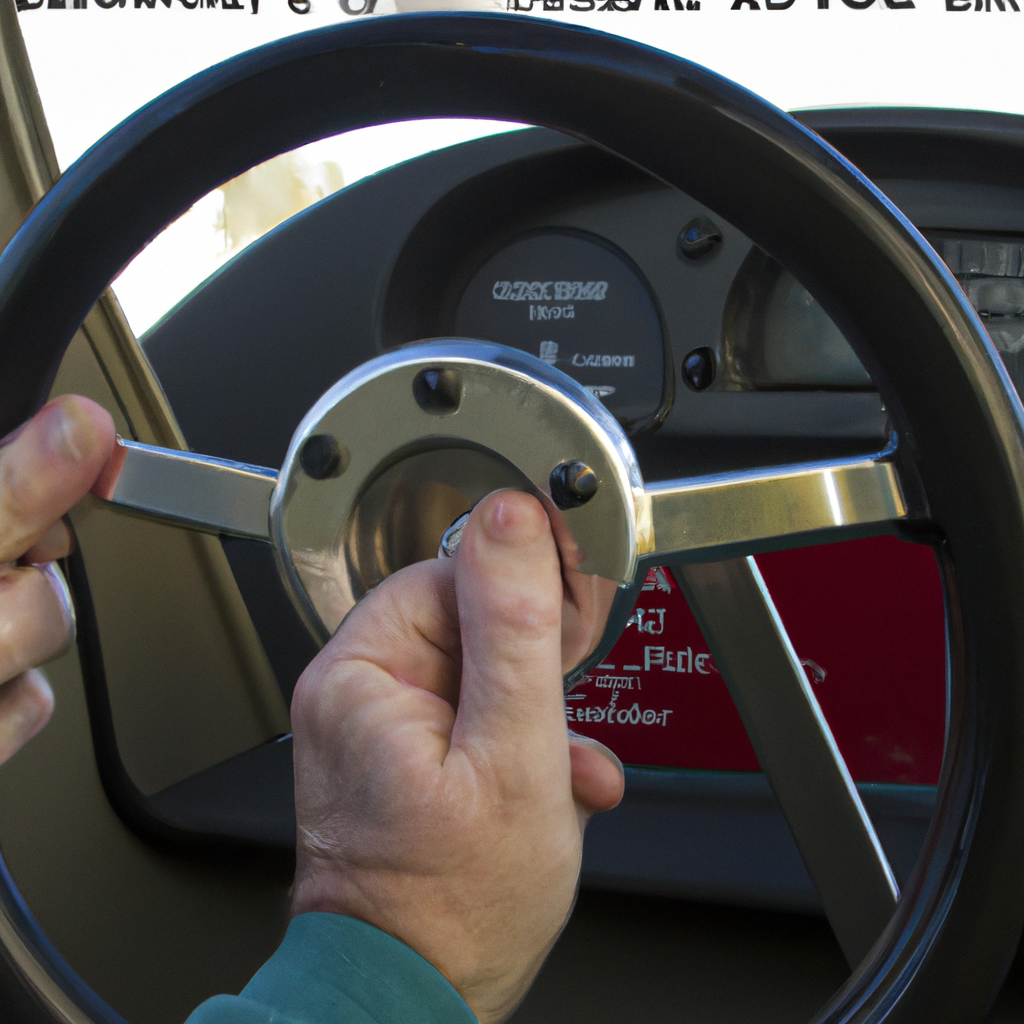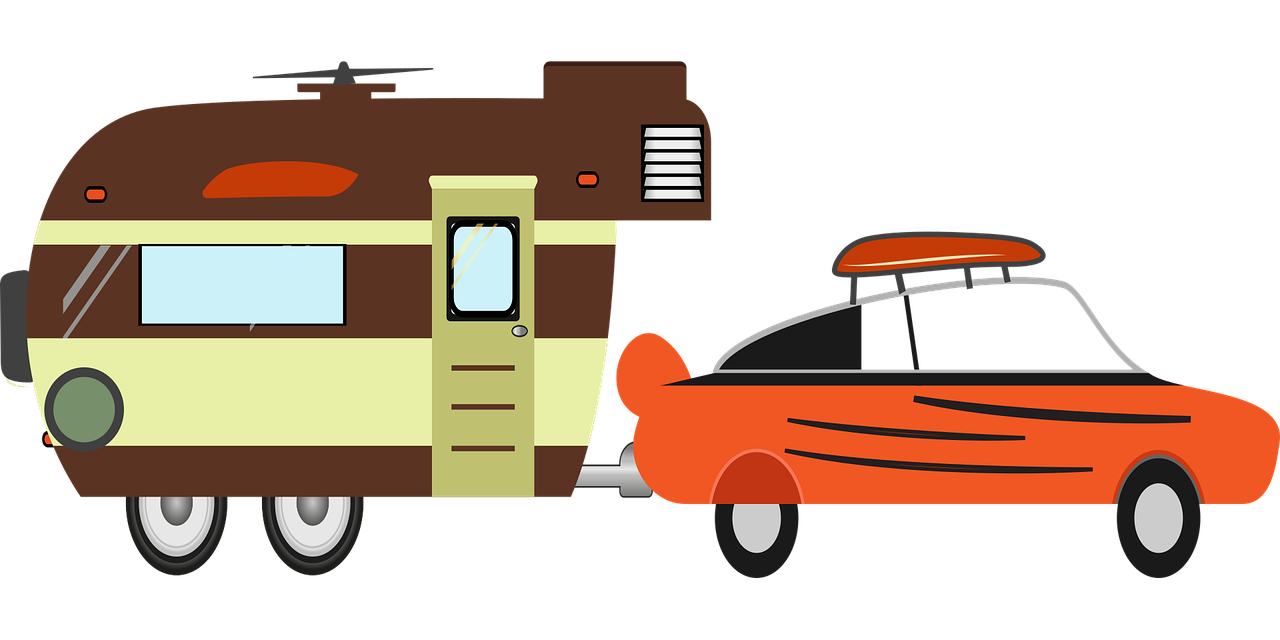Driving while towing a trailer requires a unique skill set and heightened level of awareness. In this article, we will explore the key factors and strategies to consider when maneuvering a vehicle with a trailer in tow. From understanding weight distribution and adjusting your driving techniques to ensuring proper braking and maintaining a safe distance, we will provide you with the essential knowledge and tips to navigate the roads confidently and responsibly. So, whether you are a seasoned trailer driver or a newbie seeking guidance, this article will equip you with valuable insights on how to effectively drive while towing a trailer.
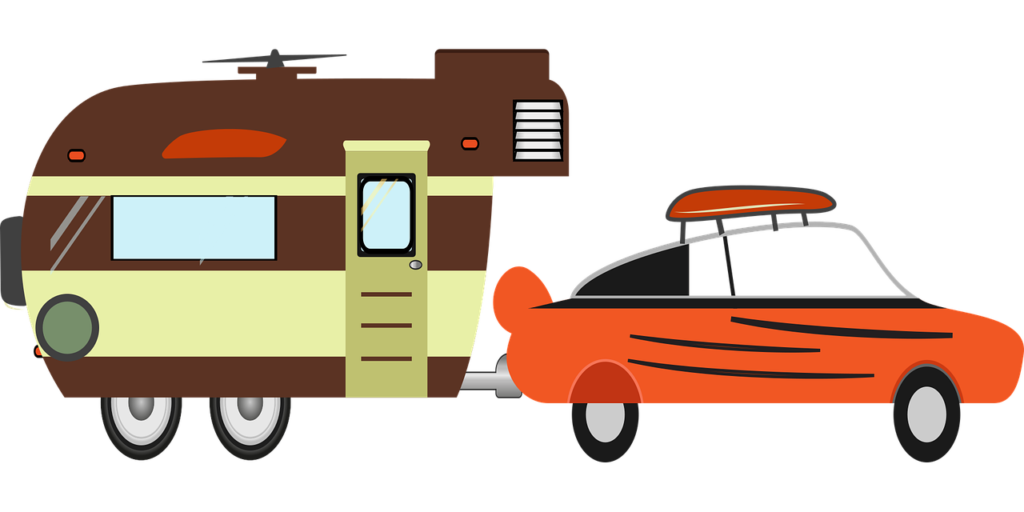
This image is property of pixabay.com.
Preparing Your Vehicle
Check Towing Capacity
Before you begin your journey with a trailer in tow, it is crucial to determine if your vehicle is capable of safely towing the load. Every vehicle has a maximum towing capacity, which can be found in the owner’s manual or by consulting the manufacturer’s specifications. Exceeding the towing capacity can put excessive strain on your vehicle, compromising its performance and potentially causing accidents. Always ensure that the weight of your trailer and its cargo falls within the approved towing capacity of your vehicle.
Ensure Proper Hitch Setup
One of the most crucial aspects of safe towing is ensuring that your hitch setup is properly installed. This includes selecting the correct hitch for your vehicle and trailer combination, as well as securing it tightly. A loose or improperly installed hitch can lead to dangerous swaying or detachment while on the road. It is recommended to consult a professional or follow the manufacturer’s guidelines to ensure the hitch is installed correctly.
Inspect Trailer Connections
Before hitting the road, it is essential to thoroughly inspect all trailer connections. This includes checking the hitch connection, safety chains, and electrical connections. Ensure that the hitch is securely locked into place and that the safety chains are crossed under the hitch, allowing them to catch the trailer in case of detachment. Additionally, check the electrical connections for proper functioning of the trailer lights and signals. Regular inspection and maintenance of these connections help in preventing accidents on the road.
Loading and Balancing the Trailer
Distribute Weight Evenly
Proper weight distribution within a trailer is vital for maintaining stability and control while towing. To achieve balanced weight distribution, ensure that the heavier items are placed closer to the trailer’s axle. This prevents the trailer from becoming either front-heavy or rear-heavy, which can lead to swaying or fishtailing during your journey. Uneven weight distribution greatly impacts the handling of the towing vehicle and can increase the risk of accidents.
Secure Cargo Properly
To avoid shifting or losing cargo during transit, it is essential to secure it properly within the trailer. Utilize straps, tie-downs, or cargo nets to fasten the items tightly, preventing any movement that may affect the overall balance or stability of the trailer. Take into consideration the weight and size of each item, as well as the trailer’s load capacity, when securing the cargo. The goal is to ensure that everything is held securely in place, minimizing the risk of accidents caused by shifting loads.
Check and Adjust Trailer Tire Pressure
Maintaining the proper tire pressure on both your towing vehicle and the trailer is crucial for safe towing. Improperly inflated tires can lead to poor handling, decreased fuel efficiency, and increased risk of blowouts. Before embarking on your journey, check the tire pressure of both the towing vehicle and the trailer using a reliable pressure gauge. Adjust the pressure to the manufacturer’s recommended specifications to ensure optimal performance and safety on the road.
Driving Techniques
Maintain a Safe Speed
When towing a trailer, it is essential to drive at a safe and controlled speed. The increased weight and length of the combined vehicle and trailer affect its acceleration, braking, and overall maneuverability. Adhering to the posted speed limits and driving even slower when necessary provides you with more time and distance to react to any potential hazards or sudden changes in traffic conditions.
Allow for Increased Stopping Distance
Due to the increased weight and length of a vehicle towing a trailer, it is crucial to allow for a greater stopping distance. The additional weight requires more force and time to bring the vehicle to a complete stop. Leave ample space between your vehicle and the one ahead, allowing for a safe stopping distance. This precautionary measure becomes especially important when traveling at higher speeds or in adverse weather conditions.
Practice Smooth Braking
When it comes to braking while towing a trailer, it is essential to apply the brakes smoothly and progressively rather than abruptly. Sudden and harsh braking can lead to an uncontrolled swaying or fishtailing of the trailer, which can be extremely dangerous. Gradually apply the brakes, allowing the vehicle and trailer to come to a controlled stop, reducing the risk of accidents or loss of control.
Use Mirrors and Adjust Blind Spots
Maintaining visibility of the surrounding traffic is vital while towing a trailer. Make use of your mirrors to monitor the vehicles behind and alongside you. Adjust them before setting off to minimize your blind spots and ensure a clear view. Remember to regularly check these mirrors while driving to stay aware of your surroundings, especially during lane changes or when turning.
Be Cautious While Turning
When towing a trailer, turning requires extra care and attention. The additional length and weight of the trailer will affect the turning radius of your vehicle. Take wider turns to prevent the trailer from hitting curbs, poles, or other obstacles. Be mindful of other traffic and pedestrians while making turns, as the extended length of your vehicle and trailer combination may require additional space on the road.
Avoid Sudden Lane Changes
Changing lanes with a trailer requires careful consideration and planning. Avoid sudden lane changes, as they can lead to unstable towing conditions or collisions with other vehicles. Always use your turn signals to indicate your intention to change lanes, and ensure that you have clear visibility of the surrounding traffic before executing the maneuver. Prioritize smooth and deliberate movements while changing lanes to maintain control and safety.
Keep Adequate Following Distance
Maintaining a safe following distance is crucial when towing a trailer. The increased weight affects the stopping distance of your vehicle, requiring more time and space to come to a complete stop. By keeping a larger distance between your vehicle and the one ahead, you allow for a greater margin of safety. This precautionary measure provides you with the necessary time to react to any sudden braking or changes in traffic conditions.
Watch for Shifting Loads
Throughout your journey, periodically check the trailer to ensure that the load is secure and hasn’t shifted during transit. Vibrations and bumps on the road can cause cargo to move, potentially affecting the balance and stability of the trailer. If you notice any shifting loads, safely pull over at the nearest opportunity and properly secure the items before continuing your journey. A stable load reduces the risk of accidents caused by unbalanced weight distribution.
Navigating Hills and Inclines
Start Ascending with Momentum
When approaching a hill or incline, it is crucial to build momentum before reaching the slope. Utilize the flat or downhill section preceding the ascent to increase your speed gradually. This momentum helps your vehicle and trailer combination maintain a steady pace when climbing, preventing the possibility of stalling or struggling to ascend the slope.
Downshift when Descending
When descending a hill or incline, downshifting your transmission can help maintain control and prevent excessive strain on your brakes. Downshifting to a lower gear allows the engine to provide additional resistance, helping to slow down the vehicle without relying solely on the brakes. Use engine braking in combination with your regular braking to maintain a safe and controlled descent.
Maintain a Steady Speed
Maintaining a steady speed while navigating hills and inclines is key to a safe towing experience. Allow the vehicle to naturally adjust its speed to match the slope of the terrain. Avoid sudden accelerations or decelerations, as they can lead to loss of control or instability in your vehicle and trailer combination. Patience and smooth driving will ensure a safe journey in diverse terrains.
Avoid Overheating Brakes
The additional weight of a trailer places extra strain on the vehicle’s braking system. When traveling downhill, constant brake application can lead to overheating of the brakes, reducing their effectiveness. To prevent this, practice engine braking techniques by downshifting to lower gears. Engine braking helps in reducing the reliance on the braking system, allowing it to cool down and maintain optimal performance.
Use Engine Braking
Engine braking, also known as downshifting, is a technique that allows the engine to assist in slowing down the vehicle while descending slopes. By downshifting to a lower gear, the engine’s resistance helps in controlling the speed without solely relying on the brakes. This technique reduces the strain on the braking system, prevents overheating, and enhances overall braking performance while towing a trailer.
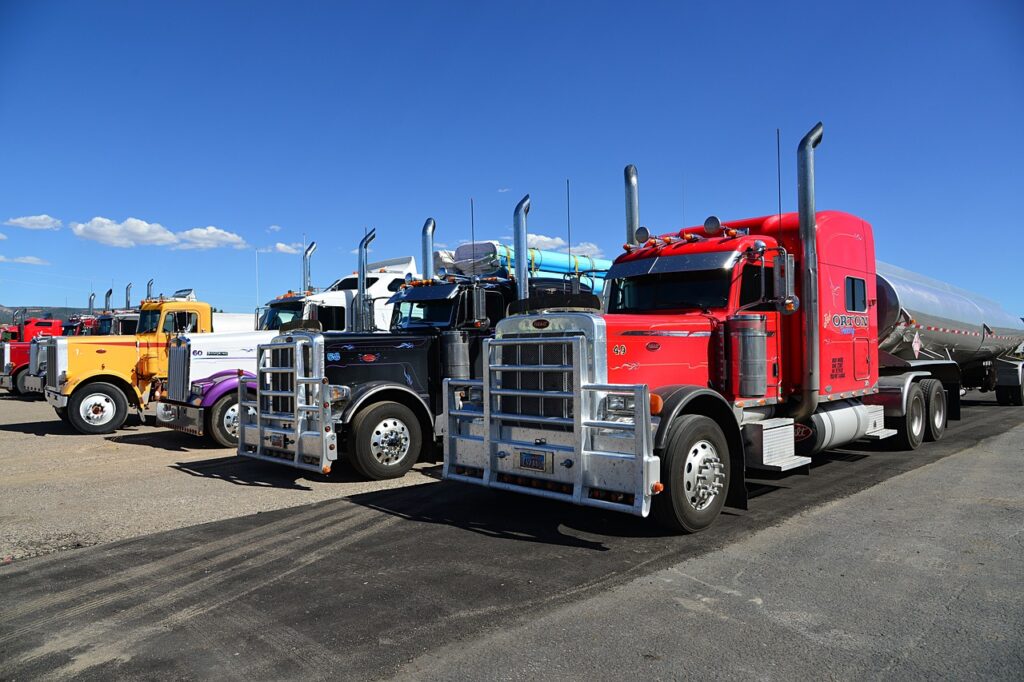
This image is property of pixabay.com.
Backing Up and Parking
Use a Spotter If Possible
Backing up a vehicle with a trailer can be challenging, especially when it comes to maneuvering in tight spaces. If possible, have a spotter help guide you while you reverse. They can provide you with valuable assistance by checking blind spots, providing directions, and ensuring that you have enough clearance to park or back up safely. Clear communication between yourself and the spotter is crucial for a successful and accident-free backing maneuver.
Practice and Be Patient
Backing up and parking with a trailer takes practice and patience. Familiarize yourself with the handling characteristics of your vehicle and trailer combination in a controlled environment before attempting it in real-world scenarios. Gradually build your skills and confidence through repetitive practice, allowing you to develop a better understanding of how the trailer responds to your inputs. Remember, patience is key, and taking your time ensures a safe and accurate backing maneuver.
Use Mirrors to Guide You
When reversing or parking with a trailer, proper usage of mirrors becomes even more important. Adjust your mirrors to provide the widest possible view behind and alongside your vehicle. Regularly check your mirrors while maneuvering to monitor your surroundings and ensure that there are no obstacles or other vehicles in your path. Reliance on mirrors helps you make accurate adjustments while backing up or parking with a trailer.
Make Small Steering Adjustments
While backing up or parking with a trailer, small and precise steering adjustments are crucial. The longer length of the combined vehicle and trailer affects how much the trailer responds to steering inputs. Make gradual and deliberate adjustments to the steering wheel, ensuring that you do not turn too sharply or overcompensate. Small and controlled movements help in maintaining stability and accuracy while maneuvering in tight spaces.
Assess the Surroundings
Before backing up or parking with a trailer, thoroughly assess the surroundings to identify any potential obstacles or hazards. Look for objects, curbs, or uneven terrain that may obstruct your path or cause damage to the trailer or towing vehicle. By having a clear understanding of the environment in which you are maneuvering, you can make informed decisions, adjust your approach, and ensure a safe and smooth parking or backing maneuver.
Changing Lanes and Passing
Signal and Check Your Mirrors
When changing lanes or passing while towing a trailer, clear communication and awareness of your surroundings are crucial. Always use your turn signals to indicate your intentions to other drivers. Check your mirrors before initiating any lane changes to ensure no vehicles are in your blind spots. Proper signaling and mirror usage provide ample warning to other drivers, reducing the risk of accidents or misunderstandings.
Account for Increased Length
Towing a trailer adds significant length to your vehicle, which requires careful consideration when changing lanes or passing. Be aware of the extra dimensions you must account for and ensure that there is enough space available before making any maneuvers. Remember to take into consideration the length of both your vehicle and the trailer when assessing the gaps between vehicles or when passing slower-moving traffic.
Leave Extra Space
Leaving additional space while changing lanes or passing is crucial when towing a trailer. The increased weight and length affect the acceleration and braking capabilities of your vehicle. Providing a larger cushion between your vehicle and the one ahead ensures that you have enough time and distance to complete the maneuver safely. Practice patience and maintain a safe distance to avoid accidents or undue strain on your vehicle and trailer combination.
Pass with Caution
Passing another vehicle while towing a trailer requires extra caution and planning. Ensure that you have sufficient visibility and an adequate passing zone before initiating the maneuver. Increase your speed gradually to pass the vehicle safely and minimize the time spent in the adjacent lane. Always maintain awareness of the surrounding traffic, and return to your original lane only when it is safe to do so. Prioritize the safety of yourself, your passengers, and other road users during passing maneuvers.

This image is property of pixabay.com.
Dealing with Crosswinds
Maintain a Firm Grip on the Steering Wheel
When facing crosswinds while towing a trailer, maintaining a firm grip on the steering wheel is crucial. Crosswinds can exert lateral force on the trailer, causing it to sway or push your vehicle to the side. By keeping a strong and steady hold on the steering wheel, you can counteract the forces and maintain control, ensuring that your vehicle and trailer remain on course.
Reduce Speed and Stay Centered
When encountering crosswinds, it is essential to reduce your speed to maintain better control and stability. Slow down to a safe and manageable speed that allows you to handle any sudden gusts or wind shifts. Additionally, stay centered in your lane to minimize the impact of crosswinds. This ensures that the wind exerts equal force on either side of your vehicle and trailer combination, reducing the risk of instability.
Be Prepared for Sudden Gusts
Crosswinds can sometimes be accompanied by sudden gusts, which pose a significant challenge when towing a trailer. These gusts can cause your vehicle and trailer to veer off course and potentially lead to accidents. To mitigate their impact, maintain a firm grip on the steering wheel, adjust your driving position if necessary, and be prepared for sudden changes in direction. Being alert and responsive helps in navigating these unexpected wind gusts safely.
Handling Emergency Situations
Stay Calm and Avoid Panic
In emergency situations, it is crucial to stay calm and composed. Panic can impair your ability to make clear and rational decisions, potentially exacerbating the situation. Take deep breaths, assess the situation, and respond calmly to any challenges that arise. By remaining level-headed, you can better address the emergency and ensure the safety of yourself, your passengers, and other road users.
Practice Trailer Sway Control
Trailer sway is a potentially dangerous situation in which the trailer starts moving side to side uncontrollably. Practice trailer sway control techniques to regain control in such emergencies. These techniques include adjusting your speed, steering inputs, and weight distribution within the trailer. Familiarize yourself with these methods before an emergency occurs, allowing you to react swiftly and effectively should trailer sway ever become an issue.
Engage Trailer Brakes Only if Needed
During emergency situations, it may be necessary to engage the trailer brakes to regain control and prevent accidents. However, it is crucial to use this measure judiciously. Engaging the trailer brakes when not required can further destabilize the vehicle and trailer combination, potentially worsening the situation. Assess the severity of the emergency and use the trailer brakes strictly when necessary to counteract swaying or regain control.
Pull Over Safely and Assess the Situation
If you find yourself in an emergency situation while towing a trailer, prioritize the safety of yourself and others on the road. Whenever possible, pull over to a safe location away from traffic to assess the situation and determine the appropriate course of action. This also gives you the opportunity to inspect your vehicle, trailer, and cargo for any damage or to rectify any issues that may have caused the emergency in the first place.
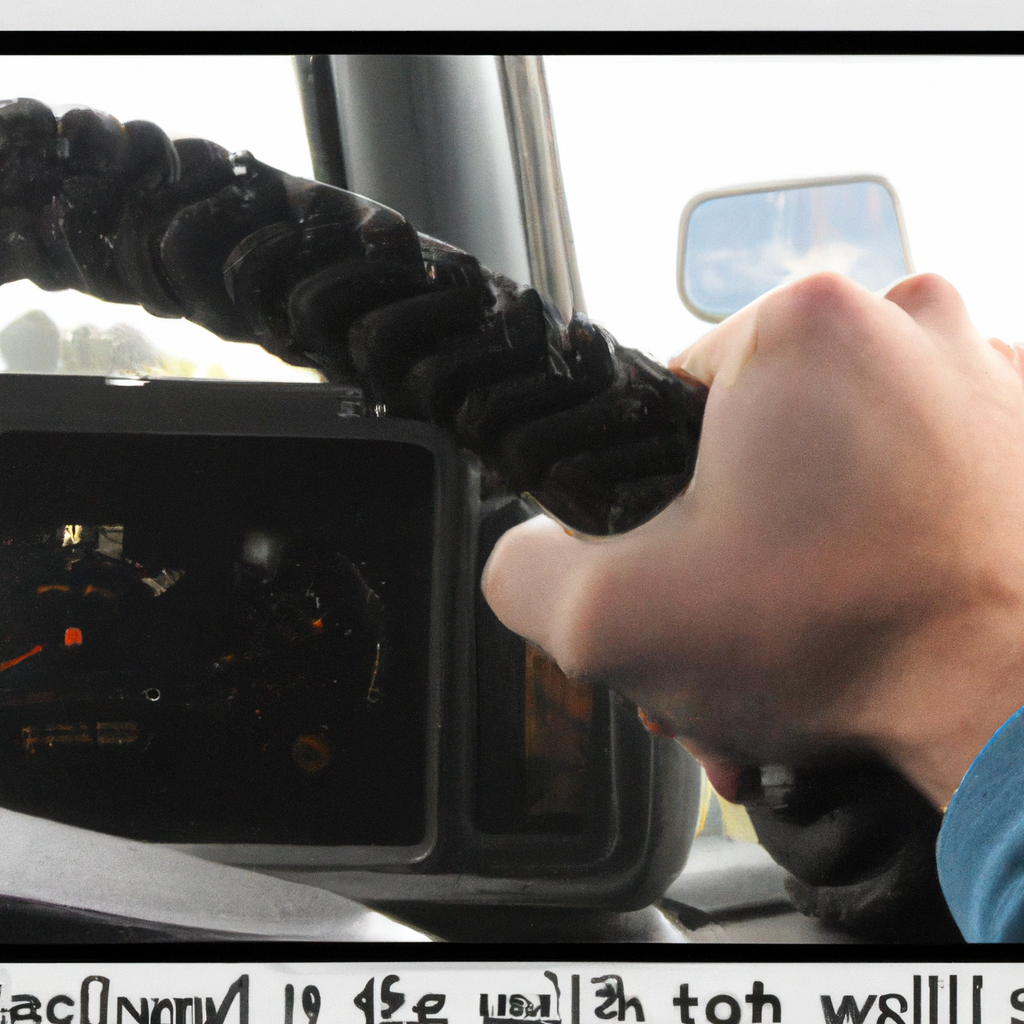
Performing Regular Safety Checks
Inspect Trailer Lights
Regularly inspecting the trailer lights ensures that they are in proper working condition. Faulty or malfunctioning lights can compromise visibility and increase the risk of accidents. Before setting off on your journey, check that all the trailer lights, including brake lights, turn signals, and markers, are functioning correctly. If any lights are not working, replace them immediately to ensure optimal safety while on the road.
Check Trailer Tire Condition
The condition of your trailer tires greatly impacts the overall safety while towing. Regularly inspect the tire condition, including the tread depth, for any signs of wear, dry rot, or damage. Ensure that the tires are properly inflated to the manufacturer’s recommended pressure. Additionally, check for any embedded objects or objects that may cause a puncture. Maintaining good tire condition helps in preventing blowouts and improves handling and stability while towing.
Ensure Brakes Are Working Properly
Proper brake functionality is essential for safe towing. Regularly inspect the brakes of your towing vehicle and trailer to ensure they are working optimally. Check for any signs of wear, damage, or fluid leaks. Test the brakes periodically to ensure they engage and disengage smoothly, providing adequate stopping power. If you notice any issues with the brakes, have them inspected and repaired by a professional before embarking on your journey.
Conclusion
Driving while towing a trailer requires careful attention to various factors, ensuring the safety of yourself, your passengers, and other road users. By following the guidelines of checking towing capacity, properly setting up the hitch, inspecting trailer connections, distributing weight evenly, securing cargo, and monitoring tire pressure, you establish a solid foundation for a safe towing experience. Implementing driving techniques such as maintaining a safe speed, allowing for increased stopping distance, practicing smooth braking, and using mirrors can greatly enhance your control and awareness while on the road. Adapting to hills and inclines, mastering backing up and parking procedures, executing lane changes and passing maneuvers with caution, and handling crosswinds effectively are essential skills to drive confidently and safely with a trailer. Finally, maintaining situational awareness, practicing safety checks, and handling emergency situations calmly further enhance your towing experience. By driving responsibly, gaining experience, and adhering to traffic laws and regulations, you can ensure a successful and safe journey while towing a trailer.
